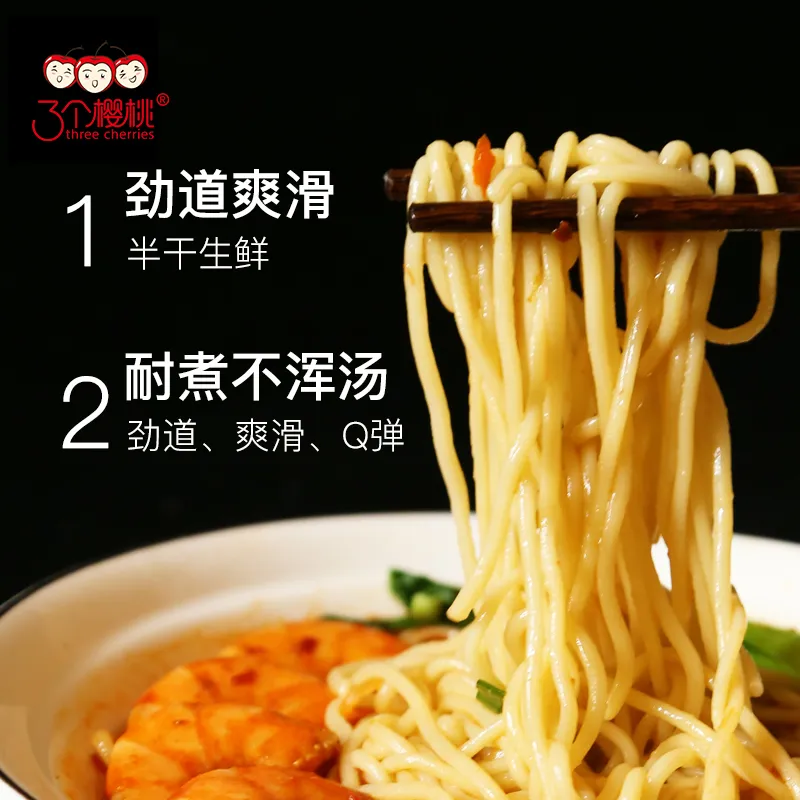Trends and Innovations in Instant Noodle Manufacturing and Distribution
The Global Phenomenon of Instant Noodle Production
Instant noodles, a culinary marvel that has become a staple for millions around the globe, represent not just a convenient meal option, but also an intricate production process that involves various technologies and global supply chains. From their humble beginnings in post-war Japan to their ubiquitous presence in grocery stores worldwide, the journey of instant noodles is one of innovation, cultural exchange, and economic growth.
The Origins of Instant Noodles
The story of instant noodles began in 1958 when Momofuku Ando, the founder of Nissin Foods, invented a method for frying noodles to dehydrate them quickly. This innovation allowed for a dish that was easy to prepare, requiring only the addition of hot water. Ando’s product, Chikin Ramen, was an immediate success in Japan, paving the way for the instant noodle industry. By 1971, Nissin had introduced Cup Noodles, revolutionizing the way instant noodles were consumed, allowing for even greater convenience.
Instant noodles found their way to international markets in the 1960s and 1970s, gaining popularity due to their affordability and ease of preparation. Today, they are consumed in staggering quantities, with billions of packets sold each year. This growth has led to a booming global market, with production hubs established in numerous countries.
The Production Process
The production of instant noodles is a highly automated and streamlined process, often utilizing advanced technologies to ensure efficiency and consistency. The core ingredients of instant noodles typically include wheat flour, water, salt, and seasoning. The production process generally involves several key stages
1. Dough Preparation Wheat flour is mixed with water and salt to form a dough. This dough is then kneaded to develop gluten, which gives the noodles their chewy texture.
2. Sheeting and Cutting The kneaded dough is flattened into sheets and cut into noodle strands of the desired thickness.
3. Steaming The cut noodles are steamed to cook them partially, which enhances flavor and texture.
4. Frying or Air-Drying The steamed noodles are either fried in oil to dehydrate them quickly or air-dried, a method that has gained popularity due to health concerns associated with frying.
instant noodle production

5. Packaging Once dried, the noodles are packaged along with seasoning sachets in various formats, such as plastic cups or moisture-proof bags.
Quality control is crucial throughout this process to ensure that the final product meets the high standards expected by consumers. Companies invest heavily in technology and automation to maintain consistency, improve production efficiency, and reduce waste.
Economic and Cultural Impact
The instant noodle industry has generated significant economic benefits for producing countries. Not only does it create jobs in manufacturing and distribution, but it also stimulates local agriculture by sourcing wheat and vegetables. Countries like China, Indonesia, and India are among the largest producers and consumers of instant noodles, contributing enormously to their national economies.
Culturally, instant noodles have transcended their original purpose as a quick meal. They are now featured in culinary innovations, such as noodle salads and gourmet dishes incorporating high-quality ingredients. Various countries have also adapted instant noodles to local tastes, resulting in unique flavor profiles. For example, Korea is famous for its spicy ramen varieties, while Thailand has introduced tom yum flavor noodles.
Challenges and Sustainability
Despite their popularity, the instant noodle industry faces several challenges. Health concerns relate to the high sodium content, low nutritional value, and reliance on processed ingredients. Additionally, environmental sustainability has become a pressing issue, with concerns regarding plastic packaging waste and the carbon footprint of production.
In response, some companies are exploring eco-friendly packaging solutions and developing healthier noodle options made from whole grains or alternative ingredients. There is a growing trend toward transparency in sourcing, with consumers increasingly favoring brands committed to sustainable practices.
Conclusion
Instant noodle production is a testament to human ingenuity, cultural versatility, and economic opportunity. As the world continues to change, so too will the instant noodle industry adapt, promising a future where convenience meets sustainability. This beloved dish is more than just a quick meal; it represents a complex interplay of culture, technology, and commerce that nourishes millions each day. Whether enjoyed on a bustling street corner or in a cozy kitchen, instant noodles remain an enduring global staple.
-
Is Whole Wheat Pasta Healthy?NewsMay.30,2025
-
Are Soba Noodles Good for Weight Loss?NewsMay.30,2025
-
Are Buckwheat Soba Noodles Healthy?NewsMay.30,2025
-
Are Buckwheat Soba Noodles Gluten Free?NewsMay.30,2025
-
Are Buckwheat Noodles Good for You?NewsMay.30,2025
-
A Healthy Way to Savor Soba and Spicy FlavorsNewsMay.30,2025
-
What Are Lanzhou Noodles?NewsMay.30,2025
Browse qua the following product new the we

















































































































